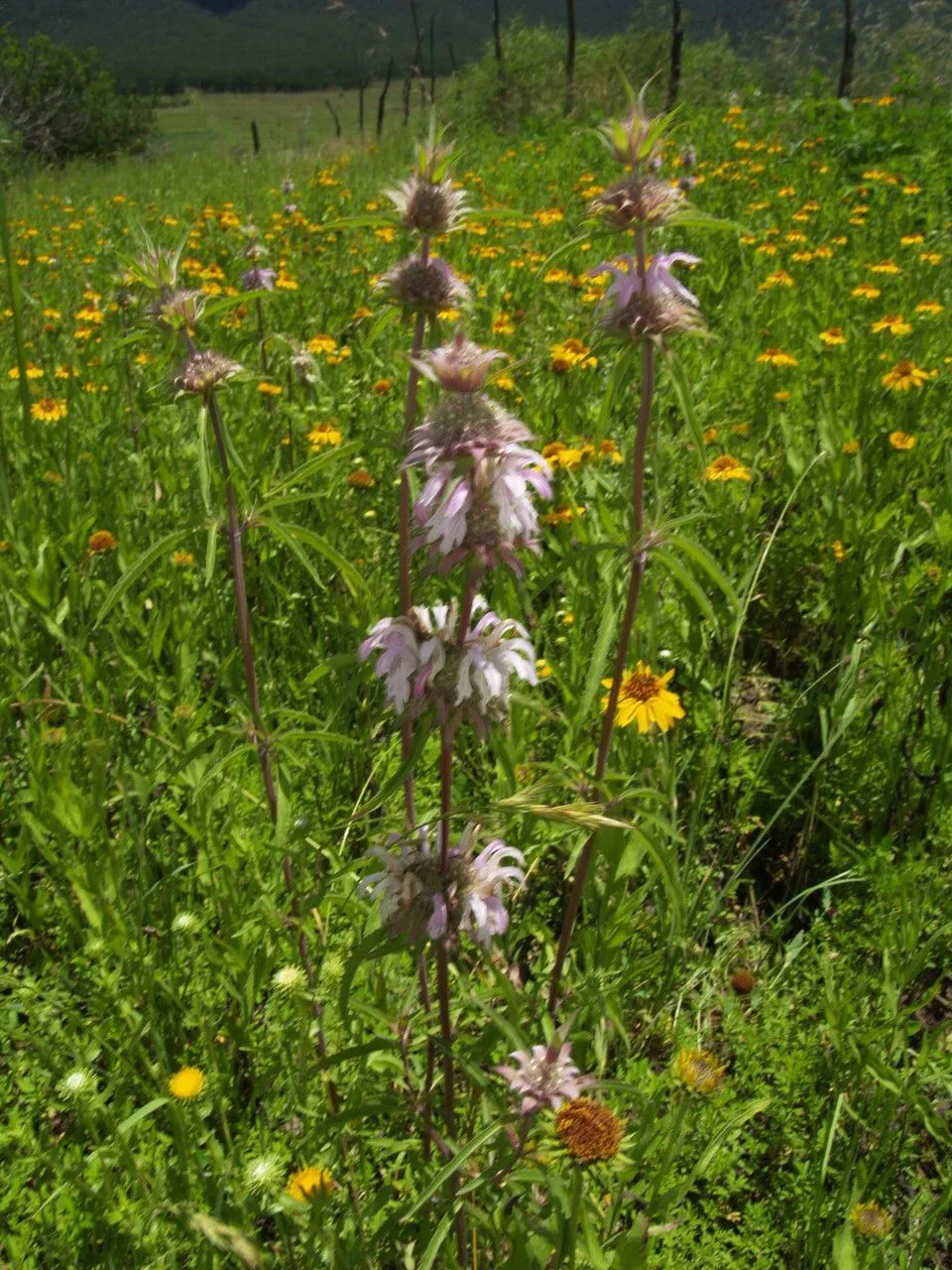
Author: Cerv. ex Lag.
Bibliography: Gen. Sp. Pl.: 2 (1816)
Year: 1816
Status: accepted
Rank: species
Genus: Monarda
Vegetable: False
Observations: C. & S. U.S.A. to Mexico
Lemon beebalm, scientifically known as Monarda citriodora, is a distinctive and aromatic member of the Lamiaceae family. Its captivating lemon-scented leaves make it a delightful plant not only for gardeners but also for various pollinators such as bees and butterflies.
Native to the Central and Southern regions of the United States, extending down into Mexico, Lemon beebalm thrives in a variety of environments. It is a hardy perennial that often flourishes in prairies, meadows, and along roadsides, showcasing its adaptability and resilience. Typically, Lemon beebalm is recognized for its unique whorls of lavender to pink flowers that bloom in stacked clusters, creating a visually stunning display that can brighten any landscape.
The plant’s lemon-scented leaves are a significant feature, imparting a pleasant fragrance when brushed against or crushed. This aromatic quality has long been appreciated in gardens and herbal medicine. The leaves of Monarda citriodora can be used in teas and as a culinary herb, adding a zesty citrus flavor to various dishes.
Historically described in 1816, Lemon beebalm continues to be an essential part of the natural ecosystem. Its vibrant flowers not only provide aesthetic value but also play a critical role in supporting pollinator populations. The plant’s flowers attract a wide range of beneficial insects, including honeybees and native solitary bees, making it a vital component of pollinator-friendly gardens.
Lemon beebalm’s low maintenance and drought tolerance further enhance its appeal to gardeners. It prefers well-drained soil and can grow in full sun to partial shade conditions. Once established, it requires minimal watering, making it an excellent choice for sustainable gardening practices.
In summary, Monarda citriodora holds a special place in both natural and cultivated landscapes. Its aromatic leaves, attractive flowers, and ecological benefits make it a worthwhile addition to gardens, while its robust nature ensures it thrives with minimal care. Lemon beebalm is a plant that truly embodies beauty, utility, and environmental harmony.
Eng: lemon beebalm, lemon mint, lemon-mint
Swe: citrontemynta
En: Lemon beebalm, Lemon-mint, Lemon mint, Oregano
Da: Citron Monarda
Fi: Sitruunaväriminttu
De: Zitronen-Monarde
Ru: Монарда лимонная
Sv: Citrontemynta
Uk: Монарда лимонна
Taken Jul 11, 2021 by ottmar Holz (cc-by-sa)
Taken Sep 7, 2021 by Jeremy Jeremy (cc-by-sa)
Taken Aug 30, 2021 by kiri butter (cc-by-sa)
Taken Jun 27, 2022 by Steve Smegner (cc-by-sa)
Taken Jul 20, 2017 by chriselis (cc-by-sa)
Taken Jul 12, 2020 by Irinalo Irinalo (cc-by-sa)
Taken Jan 1, 1900 by EOL − MBG (cc-by-nc-sa)
Taken Jun 7, 2020 by Mel Dale (cc-by-sa)
Taken Jun 7, 2020 by Mel Dale (cc-by-sa)
Taken Jun 7, 2020 by Mel Dale (cc-by-sa)
Taken Jul 25, 2013 by EOL − Carlos Velazco (cc-by-nc)
Taken Jun 9, 2014 by EOL − Linda Jo Conn (cc-by-nc)
Taken Jun 9, 2014 by EOL − Linda Jo Conn (cc-by-nc)
Taken Jun 24, 2014 by EOL − andy (cc-by-nc)
Taken Jun 25, 2014 by EOL − Linda Jo Conn (cc-by-nc)
© copyright of the Board of Trustees of the Royal Botanic Gardens, Kew.
© copyright of the Board of Trustees of the Royal Botanic Gardens, Kew.
© copyright of the Board of Trustees of the Royal Botanic Gardens, Kew.
Taken Oct 10, 2015 by EOL − Cullen Hanks (cc-by-nc)
Taken Jan 1, 1900 by EOL − MBG (cc-by-nc-sa)
Growth habit: Forb/herb
Family: Myrtaceae Author: (F.Muell.) K.D.Hill & L.A.S.Johnson Bibliography: Telopea 6: 402 (1995) Year: 1995 Status:…
Family: Rubiaceae Author: Pierre ex A.Froehner Bibliography: Notizbl. Bot. Gart. Berlin-Dahlem 1: 237 (1897) Year:…
Family: Sapindaceae Author: Koidz. Bibliography: J. Coll. Sci. Imp. Univ. Tokyo 32(1): 38 (1911) Year:…
Family: Asteraceae Author: A.Gray Bibliography: Pacif. Railr. Rep.: 107 (1857) Year: 1857 Status: accepted Rank:…
Family: Fabaceae Author: Medik. Bibliography: Vorles. Churpfälz. Phys.-Ökon. Ges. 2: 398 (1787) Year: 1787 Status:…
Family: Aspleniaceae Author: (Cav.) Alston Bibliography: Bull. Misc. Inform. Kew 1932: 309 (1932) Year: 1932…